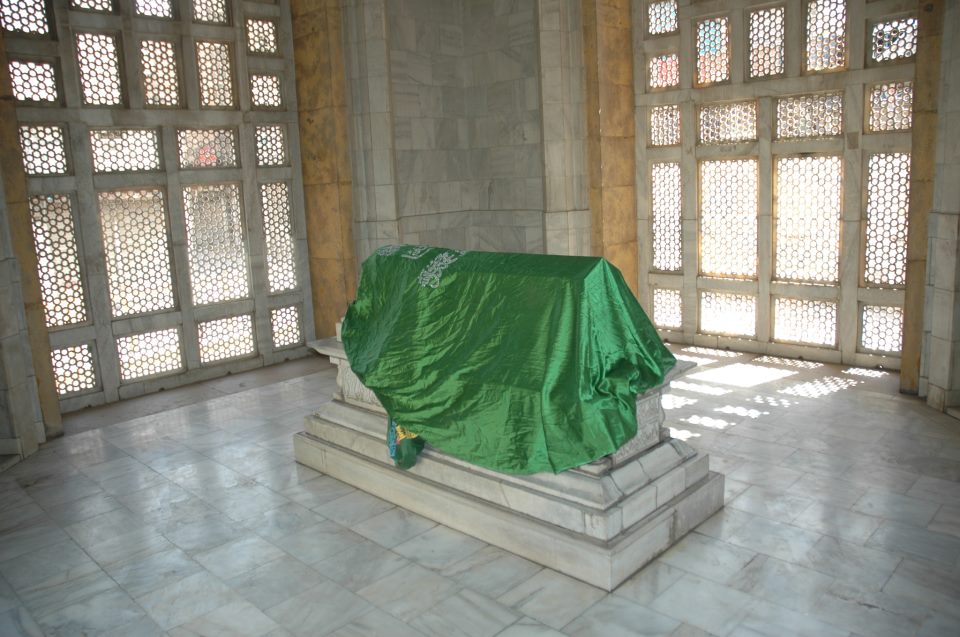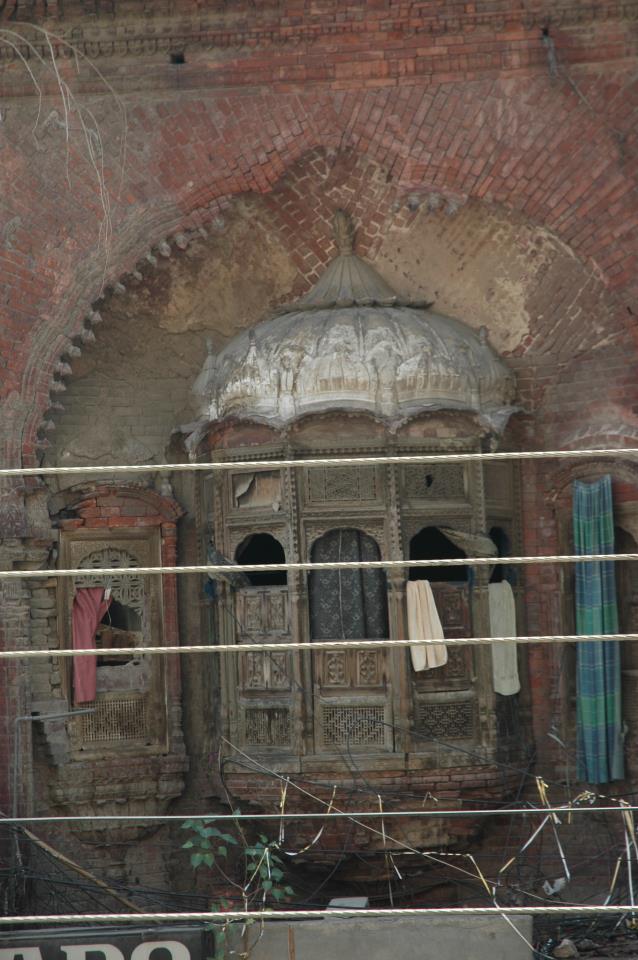Mudassir Bashir
جگ وہم خیال تے خوابے
سبھ صورت نقش بر آبے
خواجہ فرید
An illusion, whim and a dream
A pattern on a watery stream
That’s our world.
(Khawaja Farid)
Qutbuddin Aibak was the first Muslim rule in Ind and Sindh who established himself in this land. Before him, the Muslim raiders would come here for short periods and then return to their homeland, or would move on for further conquests.
Qutbuddin was originally a slave. During his childhood, a slave trader brought him from Turkistan to Nishapur. He was bought by Qazi Fakhr Uddin ibn Abdul Aziz Kufi, attracted by his apparent intelligence. Qazi Sahib took special care of Qutbuddin during his lifetime. He trained and educated him under his personal supervision. After the death of Qazi Sahib, his son sold Qutbuddin. The next owner passed him on to Sultan Shahab Uddin Ghauri to work as a carrier of loads. Sultan was pleased and rewarded him with a large amount of money. Once in Sultan’s court, Qutbuddin progressed rapidly and became the commander in chief. Sultan Shahab Uddin married him to his daughter. This allowed him to have a claim to the throne and be the successor to the sultan.
In the court, the suffix ‘Aibak’ came to be used with his name. There seem to be two possible reasons for this. First, Qutbuddin had six fingers in his hand. Aibak is Turkish for a finger. Second, there was a tribe called Aibak among the Turks. This tribe has also been described in Tabaqat e Nasiri. There are many Turks at the present time who use Aibak with there names. Mohammad Qasim Farishta writes thus in his book about the sagacity of Qutbuddin:
‘Qutbuddin had many attributes of wisdom and sagacity. He always possessed the qualities required to be a king. He knew the art of politics and was proficient in the skills of governance. He knew fully well the way to behead the enemy.
‘Qutbuddin was not a mere warrior. He could spend money on people to win them over. Therefore, he was popular among the rich and poor alike. Because of his generosity, he was called ‘Lakh Bakhsh’ and ‘Lakh Data’ (The giver of a lakh rupees)’.
(Tareekh e Farishta
p: 151vol. I)
One episode has been dedcribed by Mohammad Qasim as follows:
‘Sultan Shahab Uddin had a celebration one night. His companions were his special courtiers to whom he granted the royal dress and a large amount of money after the party was over. Qutbuddin came out of the party and distributed all his money to his servants. When the king came to know of this, he gave him the place next to him in the royal court.’
(Tareekh e Farishta
p: 154 vol. I)
Qutbuddin was a keen builder. The Mosque of Delhi and the Qutb Minar are still evidence of that. After the partition, the government of India has taken good care of these monuments. Qutbuddin had a special regard for the people of Lahore and its inhabitants. He is one of the pre-Mughal rulers who lived Lahore for a long time. About the defense of Lahore, Farishta writes:
‘Sultan was always aware of the danger of attack on Lahore from Taj Uddin Yaldoz. To deny the enemy this prize, he did not leave Lahore for a long time. He was very generous towards the citizens of Lahore. So much so that he gave them his personal money, in addition to using the court funds.’
(Tareekh e Farishta
p: 160 vol. I)
Qutbudin Aibak was a keen sportsman. He liked polo. This sport eventually killed him. During a game of polo, he fell off the horse and was killed by a corner of the saddle striking on his chest. He died in 1210 CE.
جے پچھیں حال حقیت
سن سمجھ اتے رکھ عبرت
خواجہ فرید
To understand reality,
pay heed to the times gone past
Khwaja Farid
The description of the building:
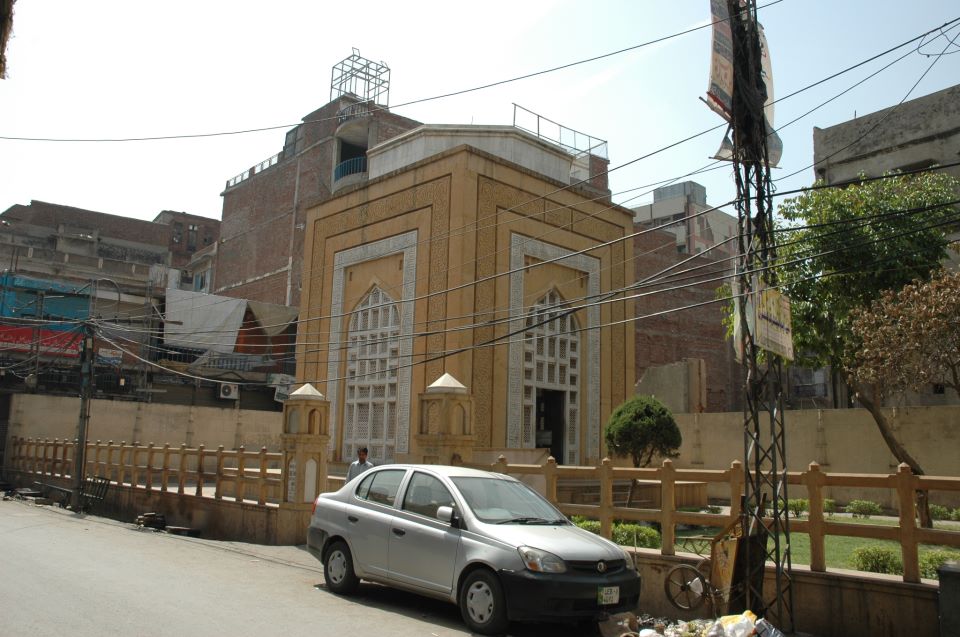
Sultan Qutbuddin Aibak was buried in Lahore after he died. It was a grand building in its time. This mausoleum was built in southern direction to the Lohari Gate. It was surrounded by majestic buildings. This mausoleum had a grand status during the rule of the Mughals. During the Sikh times, it fared less well. Noor Ahmed Chishti writes in his book Tahkeekat e Chishti:
‘This mausoleum is now called the ‘Tomb of Qutb Ghauria’. It is located outside and to the south of the Lohari Gated in the locality of butchers. In the past, this building was grand. Till the time of Sikhs, it had two storeys. The domes were made of marble. They were so beautiful that there was not a building like this in the whole city. Then, Maharaja Ranjit Singh carted everything off to Amritsar. Now, it is a mere mound of earth, inhabited by butchers’.
(Tahkeekat e Chishti
page 922)
If you come south from the Lohari Gate, into the Anarkali Bazar, there is a famous street, called the ‘Paan Bazar’. The next street leads to the Mayo Hospital, via Aibak Road, on which you can find the mausoleum. Please see the map below.
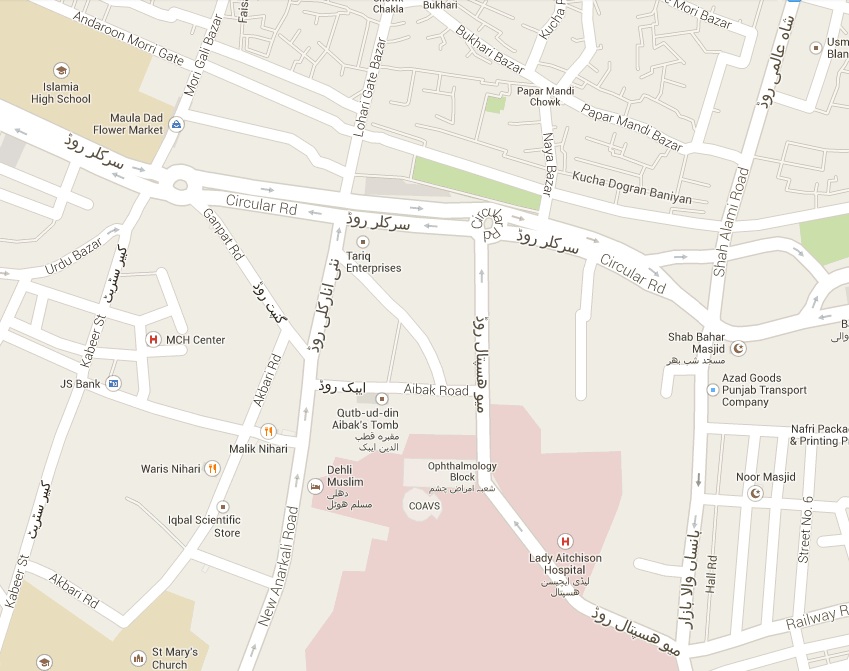
Next to the wall of the mausoleum is a seekh kebab seller. Among the younger generation, he is better known than the mausoleum. The mausoleum is not more than five marlas in area. On one side is an open field. The mausoleum was rebuilt after the partition. The calligraphy of Hafiz Yusuf Sadeedi can be seen on the walls of the mausoleum. The building is square. Nothing survives of the ancient times in this building, except the grave of Qutbuddin. The plinth is elevated to the height of three stairs. At the entrance the verses of Quran are etched from top to bottom. Behind these, there is a door of the old style and after this the grave itself which is made of marble. The mound is covered with a green sheet. On the eastern side of the grave, marble grills are installed. People still come here to offer fatiha. Plants have been grown in the adjacent field.
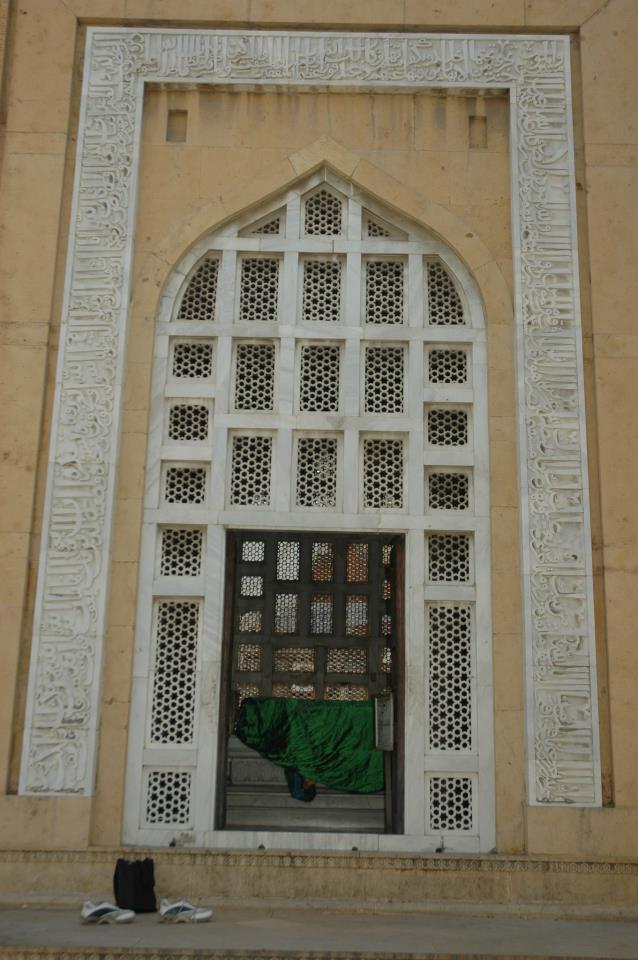
After the Sikh period, this mausoleum got some attention. First, the English government rebuilt its broken walls and allocated some more area. Then in 1990, the archeology department rebuilt this mausoleum. At that time, it was in a bad shape. The inhabitants of its surrounding houses would throw rubbish in its ground.
This burial site should be a thing for Lahoris to take pride in. In his time the king did a lot for the residents of this city. Lets see how well the coming generations look after this mausoleum.
